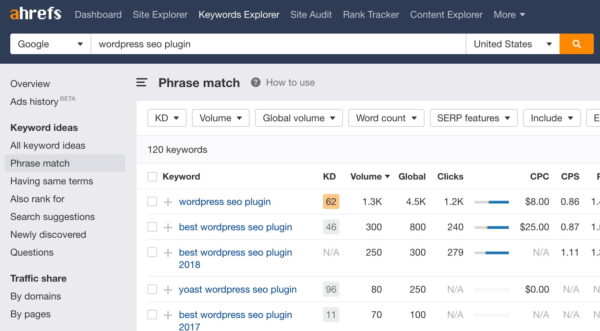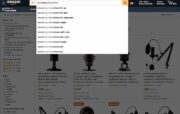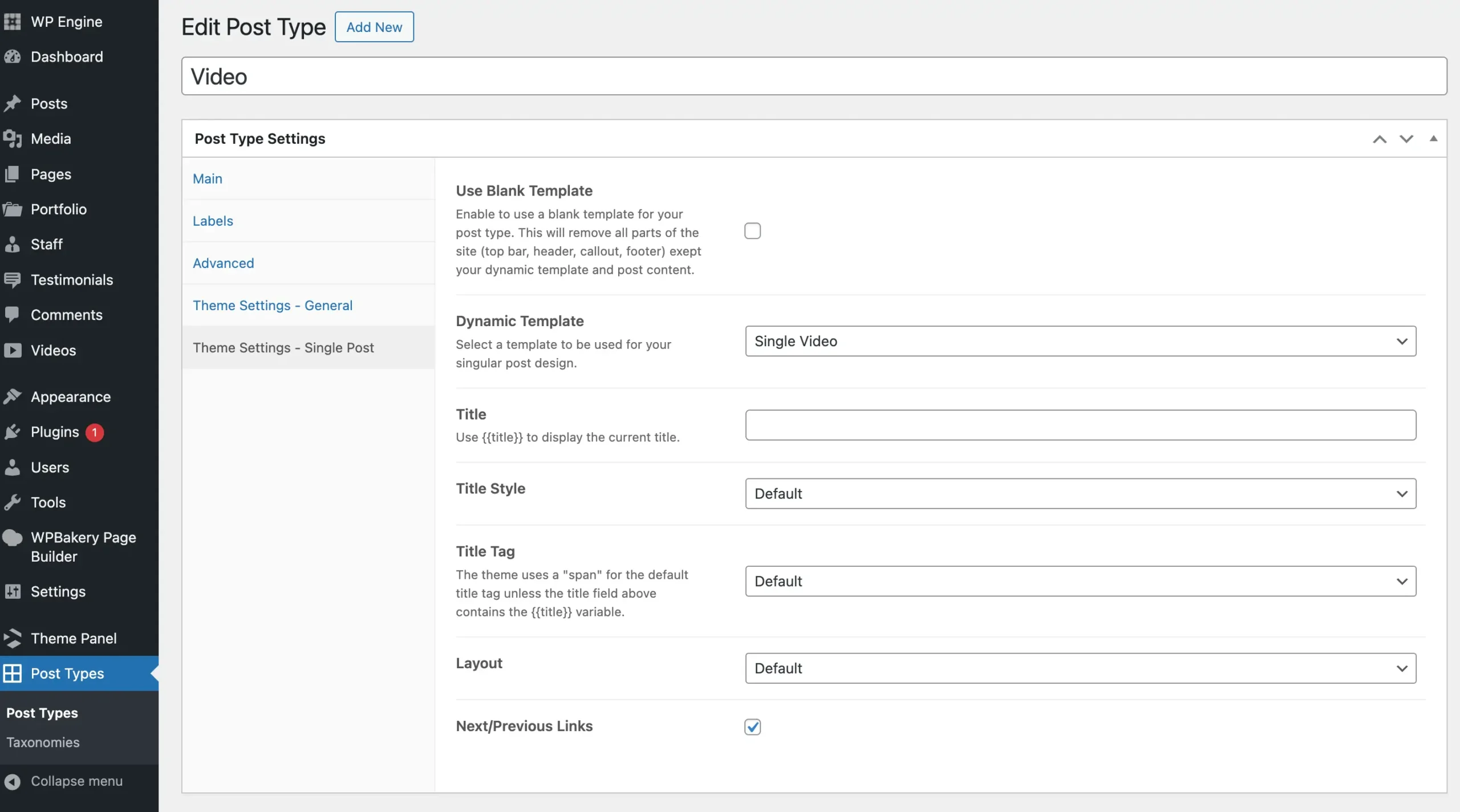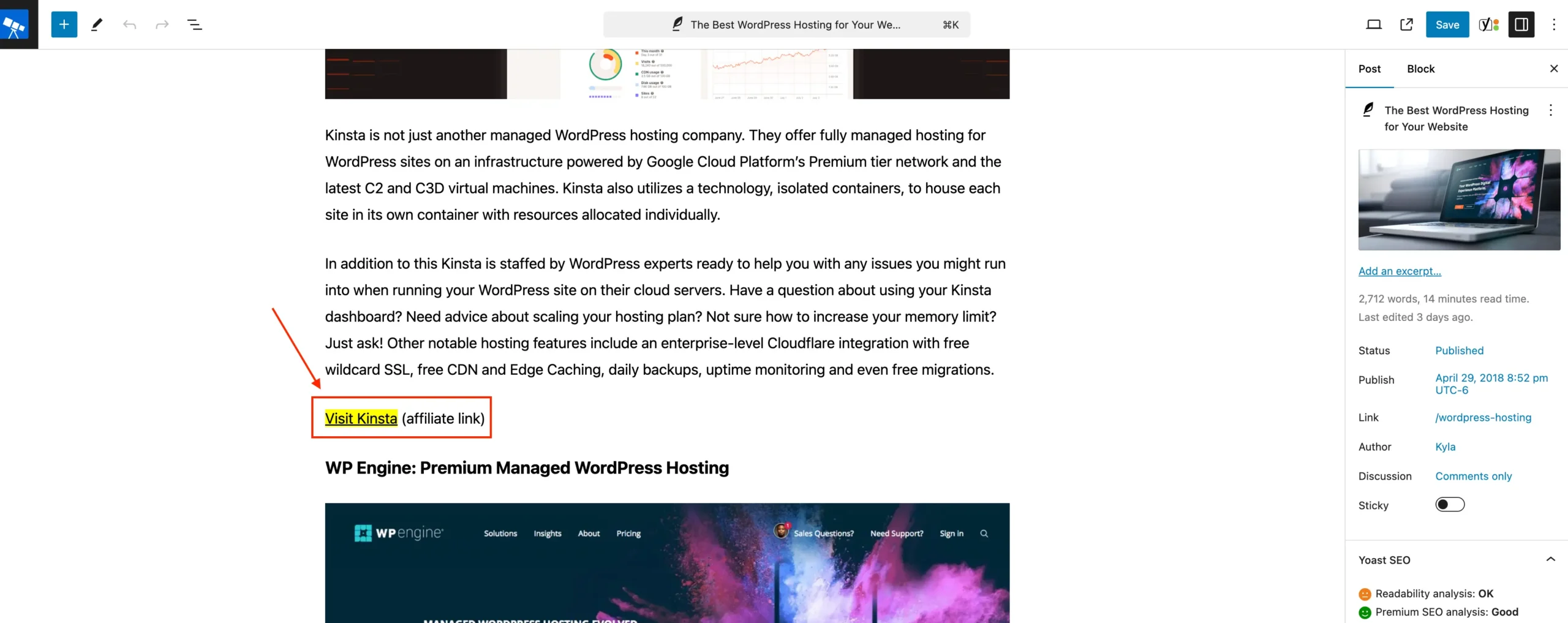When you start an ecommerce site, having a keyword strategy might seem less important. You’re selling products, right? So the product names are your keywords. While that might be true in a few cases, in most cases you need to focus on the keywords that describe the problem you or your products are solving for your customer. Selling sun protection? The problems you’re solving (or rather preventing) are, among others, sunburn and skin cancer, so these are your keywords as well. In this post, I’ll give you a practical approach on how to perform keyword research for your online store.
After you’ve defined your position and found your niche, you must have a pretty good idea of the main keywords for your website. By putting some real effort in positioning your website, you unconsciously were thinking about what we like to call ‘long-tail keywords’. You were thinking about how you could refine your product or better: product description to match a certain target market.
What is keyword research for online stores?
Let’s first explain the concept of keyword research. Keyword research can be defined as:
The activity you undertake in order to come up with an extensive list of keywords you would like to rank for.
Your keyword strategy follows that definition, as it consists of all the decisions you make based on that keyword research for your ecommerce site. This is where your search marketing starts: what do you do, explained in the language of your target market. It will help you come up with an extensive list of (long tail) keywords you’d like to rank for.
Keyword research for your online store consists of three steps:
- Write down the mission of your business.
- Make a list of all the keywords you want to be found for.
- Create landing pages for all keywords.
Where we say keywords, we also mean keyphrases (more than one keyword in a search query, as in ‘search engine optimization’).
Our ultimate guide to keyword research has more on this important topic.
Step 1: What is your mission?
We have talked about this before. The mission of your online store consists of the ideas you have about your website and your company. For the moment, let’s not focus on if that mission statement will prove to be genius enough to sell to people. This also largely depends on the market you are in.
Some markets are highly competitive, with large companies dominating the search results. For instance, an ecommerce store with illustrations for children would even have to compete with online giants like Disney. Did you know Disney is an online publisher as well? Blogs like Disney Family attract hundreds of thousands of readers per day. I can assure you that these companies have a bit more budget for marketing (and SEO) than a starting online store like yours might be. Competing in these markets is hard, ranking in these markets is hard. All the more reason to make a good decision on niches and positioning. And keywords, obviously.
Please note that if you decide on a specific long-tail keyword, that doesn’t mean you can forget about the competitive keywords altogether. These need to be mentioned, or better need to have a role in your website as well. You can’t optimize for [gluten-free vegan chocolate cupcakes] without focusing on [cupcakes] and [chocolate cupcakes] as well.
Step 2: Making a list of keywords
Try to focus on what benefits you bring to the customer, not on what you are selling from your own point of view. Normally, that will give you keywords they will most likely to use in their Google searches as well. Ask yourself: What will these people be looking for? What kind of search terms could they be using while looking for your amazing service or product? Ask yourself these questions and write down as many answers as you possibly can.
Keep your unique selling point, or your customer’s unique buying reasons in mind when drafting your list of keywords. Make sure these keywords fit your ecommerce site. To get there, start with search intent.
Uncover search intent
Search intent is all about the why behind a search. There are four types of search intent, but only three are valuable for online stores:
- Informational intent: People are looking for information;
- Commercial intent: People are looking to buy something but they are not yet willing;
- Transactional intent: People are willing to buy and are looking for the best place to do that.
In general, people don’t go from thinking they need something to buying it the next second. Especially for larger purchases that buying process goes through a few steps. It goes from awareness to researching and all the way to find out where and how to buy it. This is called search intent.
In all these phases, customers use different terms to find the products they need. To make your online store a success you need to know how the buying process or user journey of your customer works. All these insights help you reach them with awesome products and relevant content.
Here’s how you can use the search results to create intent-based content.
Find (related) keyphrases
We all know the valuable insights a tool like Google Adwords Keyword Planner can give you. It’s one of the many tools that can give you an idea of the words you might want to rank for. If you need any help with finding the right keywords, please go read this post by Marieke about keyword tools you can use.
For your ecommerce site, there are other ways to get to know the language and terms around a specific product or service. Professional SEO tools like SEMrush and Ahrefs have more in-depth data about your proposed keyphrases, including how difficult it might be to target those terms. Taking the difficulty into account, prevents you from trying to target impossible head terms that are probably dominated by big brands anyway.
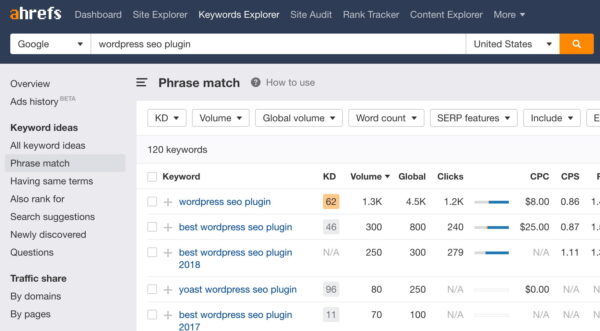
For products, it also makes sense to take a look at that other huge search engine: Amazon. Amazon is a goldmine for product-related keyphrases and related terms. You can also use Amazon’s information architecture to learn how to classify your product. Search for your product (category) and see related — or long-tail — keyphrases pop up.
Also, take a good look at the titles and product descriptions to gather more information about the products. Here, you’ll often find valuable keywords that your customers use to describe/search for the product. So it might not simply be a streaming microphone they are looking for, but a streaming microphone with a built-in pop filter and a tap-to-mute feature that’s compatible with all gaming systems and other computers.
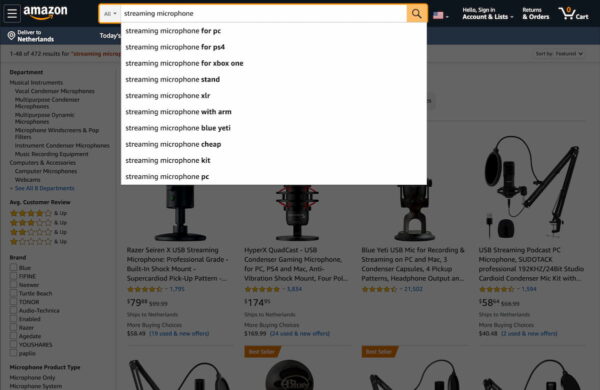
Eyeing your competitor
There are probably many companies in your niche trying to woe the same customer. It’s good to keep a close eye on these. The ones that rank well for your keyphrases or products tend to have done their research. They found the terms needed to reach your customer and built content around these terms to stand out in the search results. Good for them! But you want that spot, right?
Be sure to check out what they are doing and how they are doing it. Run their domain through an SEO tool like the aforementioned ones to uncover which terms the site is ranking for. This can give you enough ideas for awesome content that can steal their rankings! Don’t steal their content though.
Step 3: Start create landing pages
Now that you have found your main keywords, you need to make sure these are represented in the right way on your website. A commonly used way is to create a landing page per keyword.
A landing page is a page where your visitors “land” (arrive) from other sources, such as search engines or social media. So basically it’s a page that’s optimized to evoke a certain reaction from the visitor, such as buying a product or subscribing to a newsletter.
We did an article on this subject, which will help you understand how to set up a proper landing page. We’ve also listed five things you can do to improve your product pages.
Don’t forget to structure your pages!
You should create collections of pages that work together in Google. Creating one page containing all the keywords you came up with won’t get you visitors. There’s just too much competition for most keywords. You should create multiple landing pages and embed them in a structure that tells Google how those pages relate to each other. Joost wrote an excellent post on how to achieve that by creating cornerstone content and internal linking.
By the way, feel free to perform an exit-intent survey to ask your visitors what keyword they used to find your site, and if they found sufficient information about the topic. Oxfam uses a form like that:
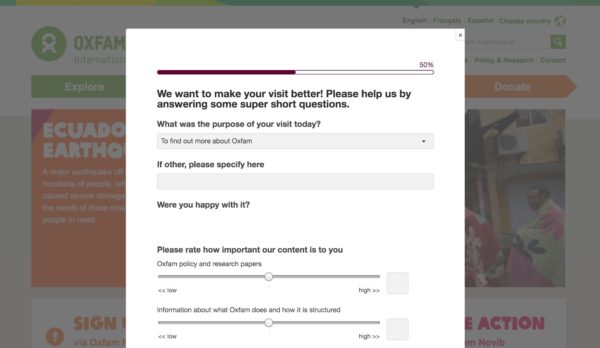
This will give you great insights in what keywords you still have to improve for.
TL;DR: Keyword research for online stores
Want your store’s pages to rank? Then you should carry out keyword research for your online store! You can do keyword research in three steps:
- Determine the mission of your business.
Write down the ideas you have about your company, your website, your products, and your customers. Narrowing down your business automatically forces you to think about (long tail) keywords. - Write down the keywords you want to be found for.
Focus on keywords that your customers would use. Try to find out what their unique buying reason is. What problem does your product solve? - Create landing pages for all of these keywords.
Write awesome content about your keywords, use nice imagery and a design that supports the message of that page.
To finish things off, create nice collections of pages and give these pages a logical place within your site structure.
So go and determine a keywords strategy for your online store!
Read more: Why should you focus on multiple keywords? »
The post Keyword research for your online store appeared first on Yoast.
